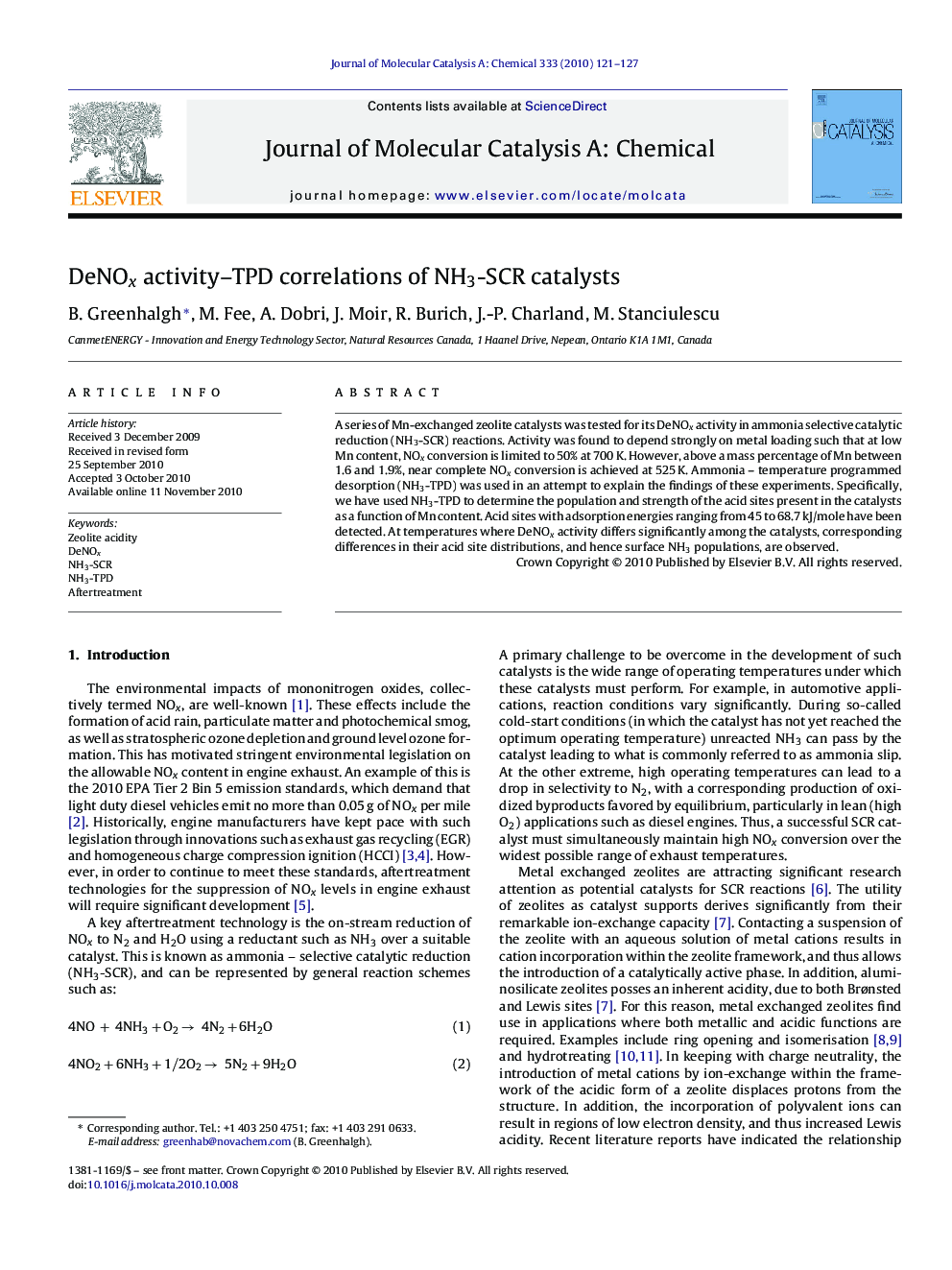| Article ID | Journal | Published Year | Pages | File Type |
|---|---|---|---|---|
| 66530 | Journal of Molecular Catalysis A: Chemical | 2010 | 7 Pages |
A series of Mn-exchanged zeolite catalysts was tested for its DeNOx activity in ammonia selective catalytic reduction (NH3-SCR) reactions. Activity was found to depend strongly on metal loading such that at low Mn content, NOx conversion is limited to 50% at 700 K. However, above a mass percentage of Mn between 1.6 and 1.9%, near complete NOx conversion is achieved at 525 K. Ammonia – temperature programmed desorption (NH3-TPD) was used in an attempt to explain the findings of these experiments. Specifically, we have used NH3-TPD to determine the population and strength of the acid sites present in the catalysts as a function of Mn content. Acid sites with adsorption energies ranging from 45 to 68.7 kJ/mole have been detected. At temperatures where DeNOx activity differs significantly among the catalysts, corresponding differences in their acid site distributions, and hence surface NH3 populations, are observed.
Graphical abstractVariations in the NH3-TPD characteristics of a Mn–zeolite catalyst series are correlated to NH3-SCR activity. At temperatures where activity differs significantly, corresponding variations in surface NH3 populations are observed.Figure optionsDownload full-size imageDownload high-quality image (42 K)Download as PowerPoint slideResearch highlights▶ NH3-SCR activity of Mn–CBV zeolite catalyst activity plateaus with metal loading. ▶ NH3-SCR activity correlates with catalyst activity. ▶ Low temperature activity appears correlated to Lewis acidity associated with metal loading. ▶ High temperature activity may be correlated to Brønsted acidity.
